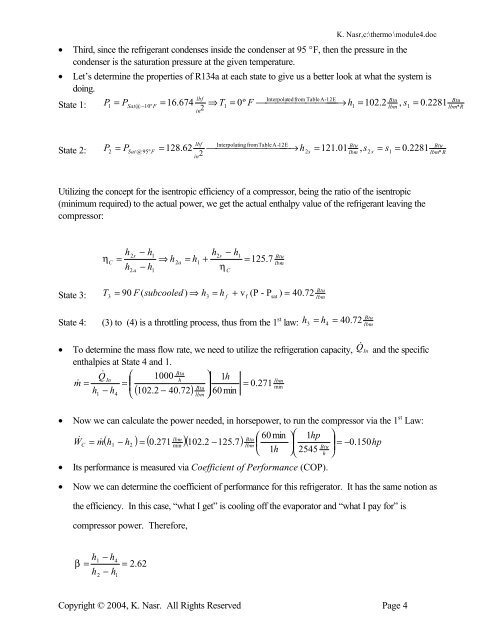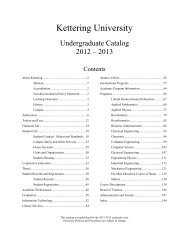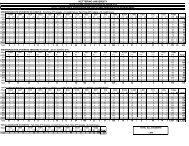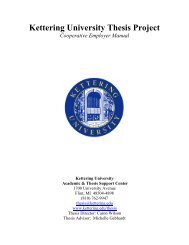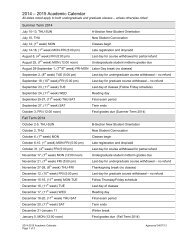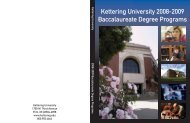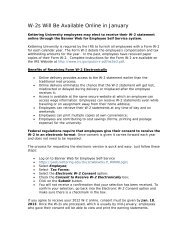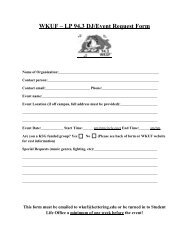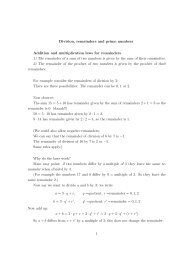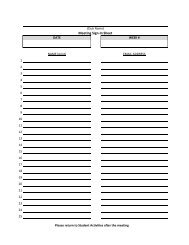Module 4. Refrigeration and Heat Pump Systems The Vapor ...
Module 4. Refrigeration and Heat Pump Systems The Vapor ...
Module 4. Refrigeration and Heat Pump Systems The Vapor ...
You also want an ePaper? Increase the reach of your titles
YUMPU automatically turns print PDFs into web optimized ePapers that Google loves.
K. Nasr,c:\thermo \module<strong>4.</strong>doc<br />
• Third, since the refrigerant condenses inside the condenser at 95 °F, then the pressure in the<br />
condenser is the saturation pressure at the given temperature.<br />
• Let’s determine the properties of R134a at each state to give us a better look at what the system is<br />
doing.<br />
lbf<br />
Interpolatedfrom TableA-12E<br />
State 1:<br />
Btu<br />
1<br />
= PSat@<br />
−10º<br />
F<br />
= 16.674 ⇒T1<br />
= 0º F ⎯⎯ ⎯⎯⎯⎯⎯⎯→h1<br />
= 102.2 , s<br />
lbm 1<br />
= 0. 2281<br />
2<br />
Btu<br />
P<br />
lbm*<br />
R<br />
in<br />
State 2:<br />
lbf InterpolatingfromTableA-12E<br />
Btu<br />
P Btu<br />
2<br />
= PSat@95º<br />
F<br />
= 128.62 ⎯⎯ ⎯⎯⎯⎯⎯⎯ →h2s<br />
= 121.01 , s<br />
lbm 2s<br />
= s1<br />
= 0. 2281<br />
lbm*<br />
R<br />
in2<br />
Utilizing the concept for the isentropic efficiency of a compressor, being the ratio of the isentropic<br />
(minimum required) to the actual power, we get the actual enthalpy value of the refrigerant leaving the<br />
compressor:<br />
η<br />
C<br />
h<br />
=<br />
h<br />
2s<br />
2a<br />
− h<br />
1<br />
− h<br />
1<br />
⇒ h<br />
2a<br />
= h<br />
1<br />
+<br />
h<br />
2s<br />
η<br />
− h<br />
C<br />
1<br />
= 125.7<br />
Btu<br />
lbm<br />
State 3:<br />
T 40. 72<br />
3<br />
= 90 F ( subcooled ) ⇒ h3<br />
= h f<br />
+ vf<br />
(P - Psat<br />
) =<br />
Btu<br />
lbm<br />
State 4: (3) to (4) is a throttling process, thus from the 1 st Btu<br />
law: h3 = h4<br />
= 40. 72<br />
lbm<br />
• To determine the mass flow rate, we need to utilize the refrigeration capacity,<br />
enthalpies at State 4 <strong>and</strong> 1.<br />
Q&<br />
⎛ 1000 Btu ⎞<br />
In<br />
h<br />
1h<br />
lbm<br />
m & = = ⎜<br />
⎟ = 0.271<br />
Btu<br />
min<br />
h1<br />
− h<br />
4<br />
( 102.2 40.72) ⎝ − 60 min<br />
lbm ⎠<br />
Q &<br />
In<br />
<strong>and</strong> the specific<br />
• Now we can calculate the power needed, in horsepower, to run the compressor via the 1 st Law:<br />
60 min ⎛ 1hp<br />
⎞<br />
W&<br />
lbm<br />
Btu ⎛ ⎞<br />
C = m&<br />
( h1 − h2<br />
) = ( 0.271<br />
)( 102.2 125.7) min<br />
−<br />
lbm ⎜ ⎟⎜<br />
⎟ = −0.<br />
150hp<br />
Btu<br />
⎝ 1h<br />
⎠<br />
2545<br />
⎝ h ⎠<br />
• Its performance is measured via Coefficient of Performance (COP).<br />
• Now we can determine the coefficient of performance for this refrigerator. It has the same notion as<br />
the efficiency. In this case, “what I get” is cooling off the evaporator <strong>and</strong> “what I pay for” is<br />
compressor power. <strong>The</strong>refore,<br />
h<br />
β =<br />
h<br />
1<br />
2<br />
− h<br />
4<br />
− h<br />
1<br />
= 2.62<br />
Copyright © 2004, K. Nasr. All Rights Reserved Page 4


